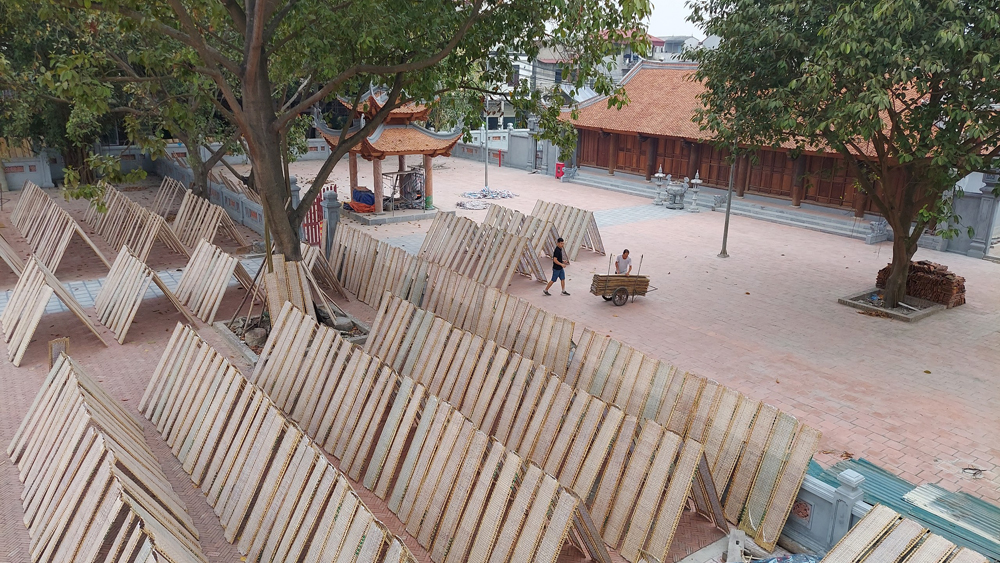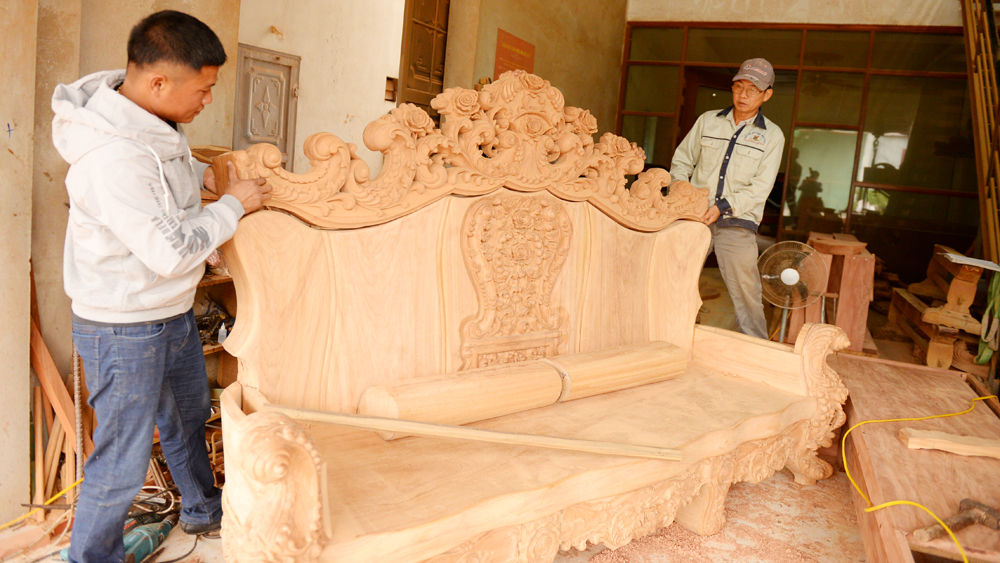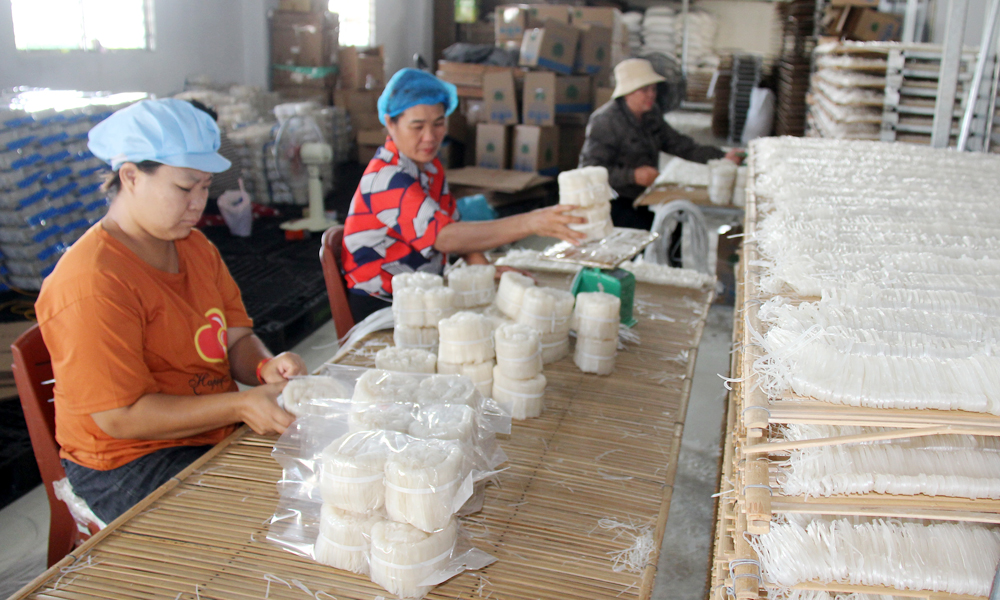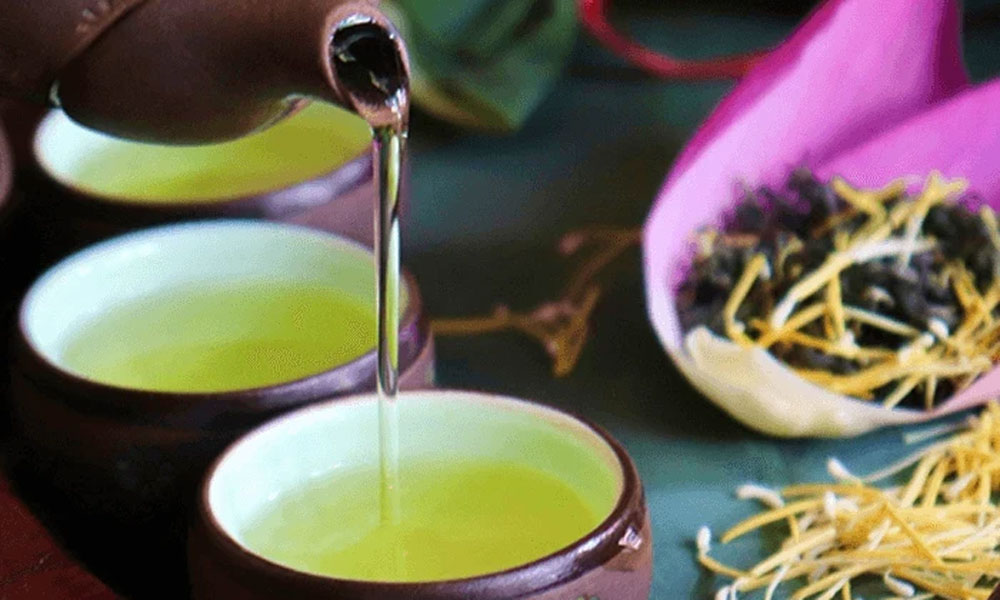Bac Giang’s craft villages bustling at year-end
Urgently fulfilling orders
At this time, Bai Oi carpentry village in Dinh Tri commune, Bac Giang city is like a big factory. The sounds of saws, drills, and chisels echo everywhere. Workshops, warehouses, and yards in the craft village are full of raw materials and products, with trucks running in and out.
 |
|
People in Tho Ha village dry rice sheets. |
Nguyen Van Quyen, owner of Quyen Nguyen facility, said that his facility is currently producing more than 40 items, consuming 400 cu.m of wood worth about 8 billion VND ($338.338 USD) and earning about 13 billion VND (549,800 USD) in revenue each year. Its products are sold in provinces and cities throughout the country and exported to China.
Nguyen Dinh Thinh, Director of Bai Oi Carpentry Cooperative, said that due to the impact of the economic recession, in 2022, the craft village's activities are quite quiet. However, this Lunar New Year (Tet) holiday, more than 100 households producing wooden products in the craft village, including 58 members of the cooperative, have obtained new orders.
These days, member households of the Van banh chung (square sticky rice cake) makers’ association in Hoang Van commune, Hiep Hoa district are boiling banh chung all day and night to serve customers. Ta Thi Quy, head of the association, said that the whole commune has more than 50 households making banh chung, including 27 members of the association. Every day, the members produce about 1,200 pieces. This year, they are expected to make 80 tons of banh chung, earning about 3.4 billion VND (143,793 USD) in revenue, an increase of 60% from 2021.
In addition to banh chung, households also make banh gio (rice cake with herbal ash). To serve the demand for the upcoming Lunar New Year and the first months of 2023, each member household has prepared 3-4 tons of sticky rice to produce cakes. The association agreed that if there is a large order, a group of 3-5 families must work together to ensure on-time delivery and quality.
Ensuring food hygiene and safety
Currently, many craft villages in the province such as the bonsai village in Bong 1 village, Thanh Hai commune and the rice noodle craft village in Thu Duong village, Nam Duong commune (Luc Ngan district); Da Mai noodle village (Bac Giang city); and Tho Ha craft village specializing in making rice sheets in Van Ha commune (Viet Yen district), are rushing into the year-end production season.
 |
|
Nguyen Van Quyen (left), owner of Quyen Nguyen facility, and a set of royal-style table and chairs which is being completed. |
On December 8, the provincial Inter-sectoral Steering Committee on Food Safety issued a plan to ensure food safety during the Lunar New Year and the Spring 2023 Festive Season. The drive will be implemented from December 19, 2022 to March 12, 2023.
Implementing this plan, localities will always pay attention to ensuring food safety and environmental sanitation. Nguyen Dinh My, Chairman of the People's Committee of Van Ha commune, said that the commune has 500 households making rice sheets, of which 400 households are in Tho Ha village and the rest in Yen Vien village.
To serve consumer demand during the Lunar New Year, many households are running three shifts per day, with an output of 1,000-3,000 sheets per day per household, earning millions of dong in profit. Currently, Van Ha has more than 200 machines making rice sheets, an increase of about 20 compared to last year. To produce quality products, the communal People's Committee required households to follow a clean production process.
According to Nguyen Van Nam, Vice Chairman of the Chu Noodle Production Association and head of Thu Duong village, Nam Duong commune, Luc Ngan district, along with encouraging households to actively use machines in production stages such as rice grinding, rice sheet slicing and drying, the village management board asked households to build wastewater treatment tanks to avoid polluting the environment and water sources.
Pham Xuan Truong, owner of Nang Truong Chu noodle facility in Thu Duong village, affirmed that all five-color noodles of the family are used powder from cold-dried vegetables and fruits with clear origin. "Focusing on ensuring food safety in production is also protecting and developing the craft village," Truong said.
 Bắc giang
Bắc giang















Reader's comments (0)